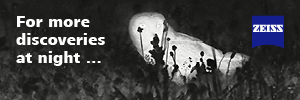Peter Kovalik
Well-known member

Myioborus ornatus x Myioborus melanocephalus
Laura N Céspedes-Arias, Andrés M Cuervo, Elisa Bonaccorso, Marialejandra Castro-Farias, Alejandro Mendoza-Santacruz, Jorge L Pérez-Emán, Christopher C Witt, Carlos Daniel Cadena, Extensive hybridization between two Andean warbler species with shallow divergence in mtDNA, Ornithology, 2021;, ukaa065, https://doi.org/10.1093/ornithology/ukaa065
Abstract:
Studying processes acting on differentiated populations upon secondary contact, such as hybridization, is important to comprehensively understand how species are formed and maintained over time. However, avian speciation studies in the tropical Andes have largely focused on the role of topographic and ecological barriers promoting divergence in allopatry, seldom examining hybridization and introgression. We describe a hybrid zone involving 2 closely related Andean warblers (Parulidae), the Golden-fronted Redstart (Myioborus ornatus), and the Spectacled Redstart (Myioborus melanocephalus). Geographic ranges of these species abut near the Colombia-Ecuador border and many specimens from the region exhibit intermediate phenotypes, but a formal description of phenotypic variation in the contact zone was heretofore lacking. We collected specimens across a transect encompassing the area where ranges abut and areas where only “pure” parental phenotypes of M. ornatus chrysops and M. melanocephalus ruficoronatus occur. We described variation in plumage traits including patterns of head and ventral coloration and tail markings based on 321 specimens. To describe genetic variation in the contact zone and over a broader phylogeographic context, we used sequences of the mitochondrial ND2 gene for 219 individuals across the transect and the entire range of both species, including all subspecies, from Venezuela to Bolivia. We documented a hybrid zone ~200 km wide based on head coloration, where intermediate plumage phenotypes are most common and “pure” forms do not overlap geographically, consistent with extensive hybridization. Across the range of the M. ornatus–M. melanocephalus complex, mitochondrial genetic structure was shallow, with genetic breaks only coinciding clearly with one topographic feature. Such a low genetic structure is striking given the high diversity in plumage phenotypes and the current taxonomy of the group. Our phenotypic data suggest that barriers to hybridization are not strong, and allow us to postulate hypotheses to be tested using forthcoming genomic data.
Laura N Céspedes-Arias, Andrés M Cuervo, Elisa Bonaccorso, Marialejandra Castro-Farias, Alejandro Mendoza-Santacruz, Jorge L Pérez-Emán, Christopher C Witt, Carlos Daniel Cadena, Extensive hybridization between two Andean warbler species with shallow divergence in mtDNA, Ornithology, 2021;, ukaa065, https://doi.org/10.1093/ornithology/ukaa065
Abstract:
Studying processes acting on differentiated populations upon secondary contact, such as hybridization, is important to comprehensively understand how species are formed and maintained over time. However, avian speciation studies in the tropical Andes have largely focused on the role of topographic and ecological barriers promoting divergence in allopatry, seldom examining hybridization and introgression. We describe a hybrid zone involving 2 closely related Andean warblers (Parulidae), the Golden-fronted Redstart (Myioborus ornatus), and the Spectacled Redstart (Myioborus melanocephalus). Geographic ranges of these species abut near the Colombia-Ecuador border and many specimens from the region exhibit intermediate phenotypes, but a formal description of phenotypic variation in the contact zone was heretofore lacking. We collected specimens across a transect encompassing the area where ranges abut and areas where only “pure” parental phenotypes of M. ornatus chrysops and M. melanocephalus ruficoronatus occur. We described variation in plumage traits including patterns of head and ventral coloration and tail markings based on 321 specimens. To describe genetic variation in the contact zone and over a broader phylogeographic context, we used sequences of the mitochondrial ND2 gene for 219 individuals across the transect and the entire range of both species, including all subspecies, from Venezuela to Bolivia. We documented a hybrid zone ~200 km wide based on head coloration, where intermediate plumage phenotypes are most common and “pure” forms do not overlap geographically, consistent with extensive hybridization. Across the range of the M. ornatus–M. melanocephalus complex, mitochondrial genetic structure was shallow, with genetic breaks only coinciding clearly with one topographic feature. Such a low genetic structure is striking given the high diversity in plumage phenotypes and the current taxonomy of the group. Our phenotypic data suggest that barriers to hybridization are not strong, and allow us to postulate hypotheses to be tested using forthcoming genomic data.



